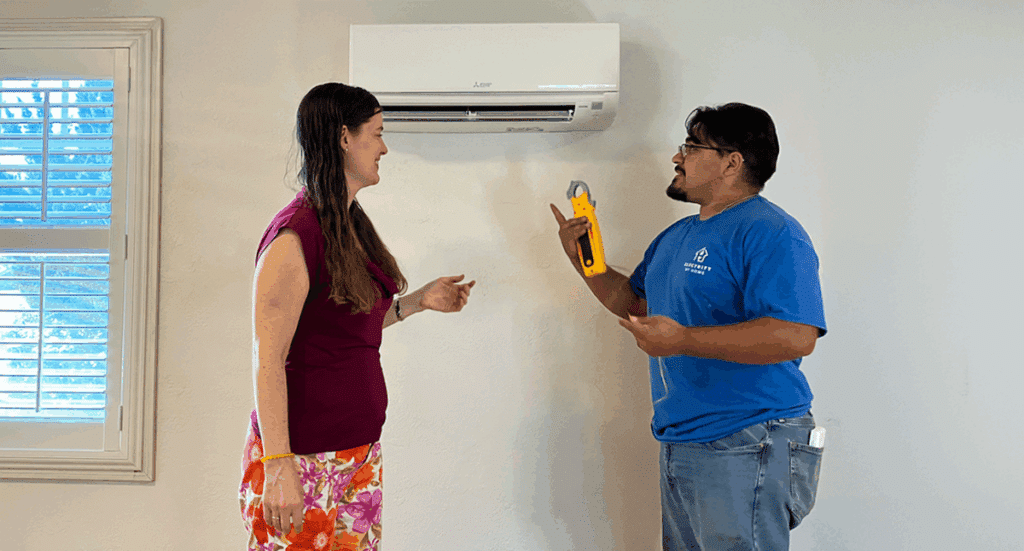
I’m discussing the new mini split with Electrify My Home (the contractor).
Why I Chose to Cut My Gas Line and Get All-Electric Appliances
By Katharine Bierce
September 16, 2025
When I bought a house in California in August of 2023, I knew immediately that I wanted to give it an eco-focused overhaul. Admittedly, I’m very focused on sustainability and doing everything I can to make the world cleaner and greener for my daughter’s generation, but aside from the climate implications of electrifying my home, I knew it was just healthier as well as future-proof, given some new regulations.
Even before we formally closed on the house and received the keys that September, I had already begun the process of making calls to schedule contractors to come after we got keys to give me quotes, and zeroing in on which company I wanted to work with for our overhaul.
The decision to go with Electrify My Home (EMH) became clear pretty quickly for a number of reasons, but the main one was this: They are the only company I’ve found that doesn’t refer you to other contractors to do the work — they do everything in-house (pun intended!). Plus, we took advantage of their free virtual assessment, which gave us a head start on the process and was convenient to do when working remotely.
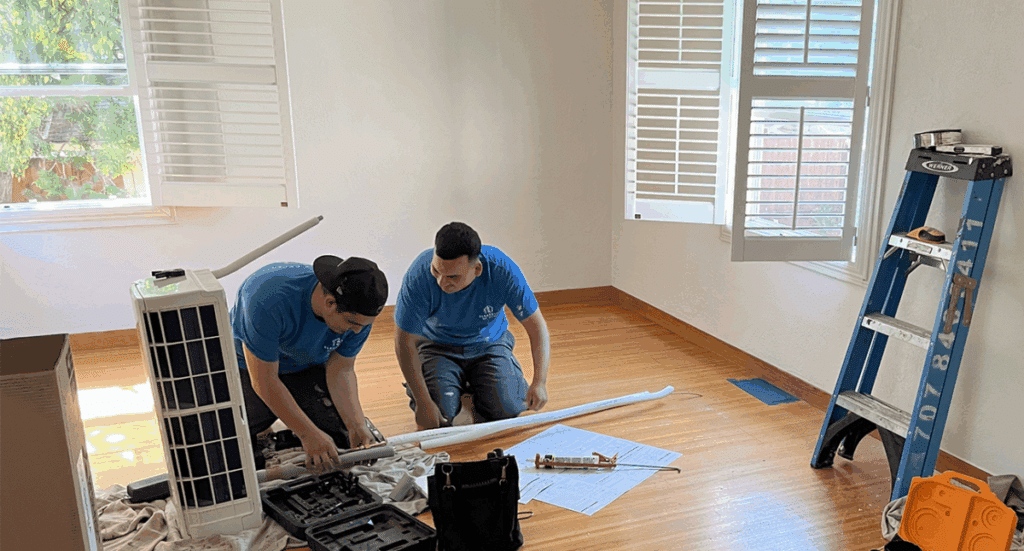
The EMH team installing a mini split as part of the heat pump HVAC for a bedroom.
My First Step with Electrify My Home: HVAC
As soon as I had the keys in my hand, I had contractors coming by to provide estimates for the different projects we wanted to tackle. On the top of my list was replacing a rusty, asbestos-covered old gas furnace that would probably have leaked carbon monoxide if we hadn’t scrapped it. My goal was to get as much done as possible before moving in so we could avoid the headaches that come with living through major home renovations.
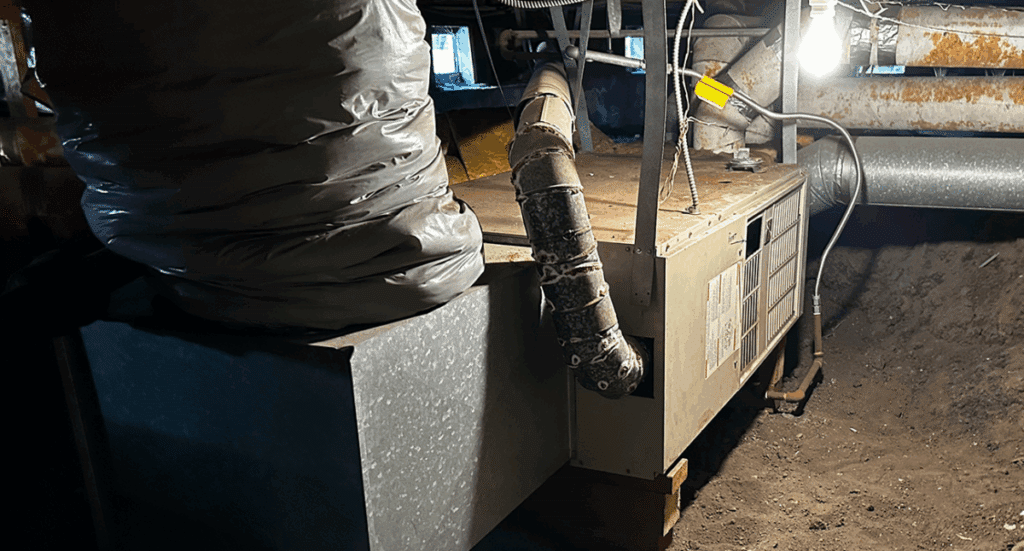
Before: The rusty old gas furnace covered in asbestos. Yuck!
We decided to start with the HVAC for a few reasons. First of all, the one that was already in the house was over 30 years old and needed replacing anyway. Second, winter was coming and we needed heating – clean heating – right away. Third, HVAC is the number one consumer of energy in a home, so it makes sense that it’s also the primary source of home emissions. Last but not least, the EMH team did all the leg work of finding us some great rebates that saved us substantial money for such a big home expense.
Even going beyond the single-family home, the data is pretty clear on the harmful impacts of heating and cooling buildings with traditional fossil fuel. Because buildings make up about 30% of global energy consumption, upgrading buildings to run on electricity is key to achieving our broader climate goals. As more and more of the electric grid runs on renewables, using electricity to power modern, more efficient appliances is better than using fossil fuels. And the market is changing as the data becomes more and more clear: Heat pumps outsold gas furnaces for the first time in 2022, and that’s even before Inflation Reduction Act rebates (up to $8,000 for a heat pump installation) and federal tax credits (still available through Dec 2025) arrived.
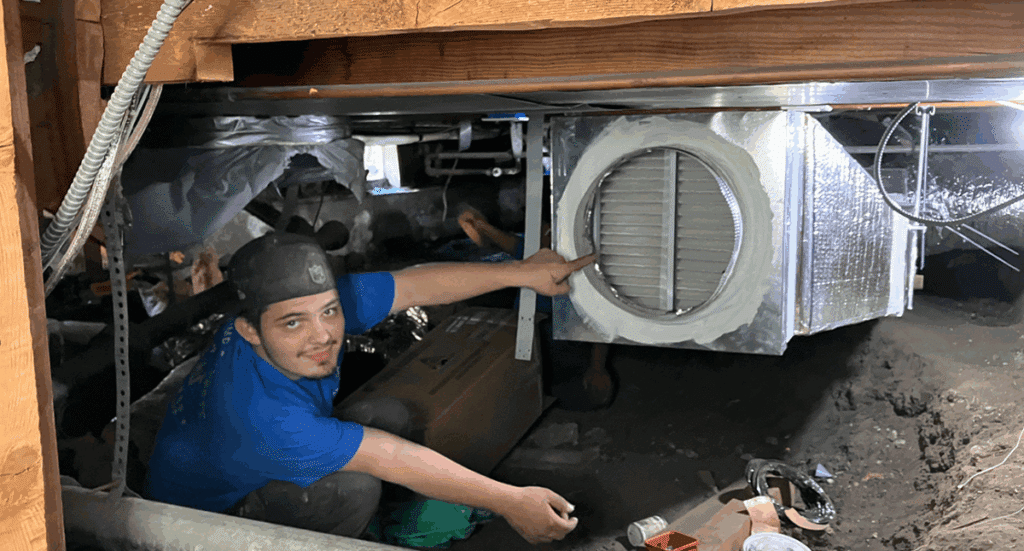
The MERV-13 air filter removes dust and pollen, while also capturing many airborne particles that can carry bacteria and viruses.
Before moving in, we took care of the biggest of all our home electrification projects and replaced our HVAC system. The EMH team also coordinated with the asbestos removal company, Synergy Environmental, and did the install in about a week, and it was fully functioning and ready to go by the time we moved in. It was as painless of a process for such a big install as we could’ve ever asked for.
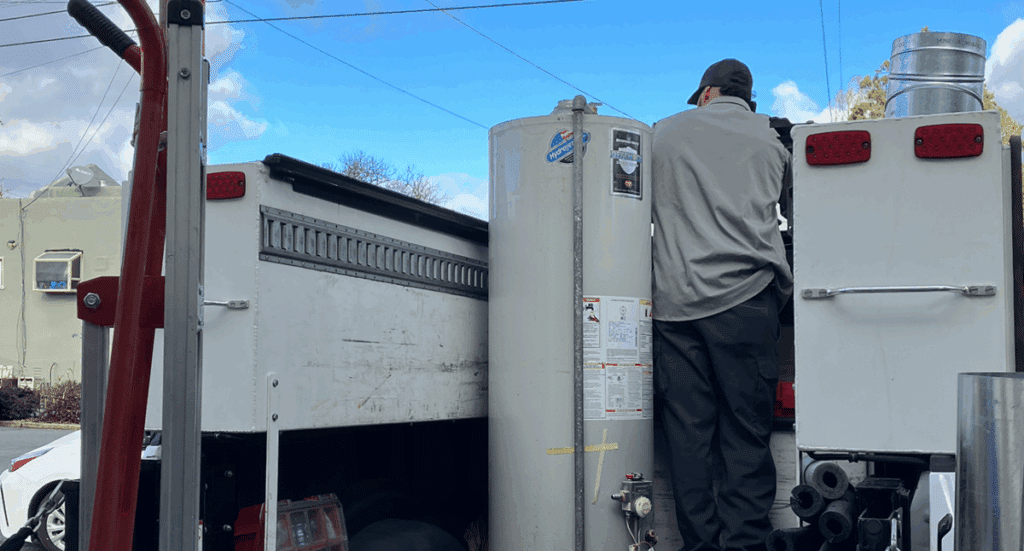
EMH is taking away my old gas water heater.
Upgrading to a Heat Pump Water Heater A Year Later
While HVAC is the primary source of home emissions, gas water heaters are the second leading offender. But the benefits of today’s electric heat pumps are many: They are up to four times more efficient at heating your space than gas furnaces, they improve indoor air quality, and their lifespan is more than double a traditional HVAC system. A single heat pump can last for more than 50 years, making it an excellent investment for many reasons. For these reasons, it was a pretty clear decision for me to make the switch.
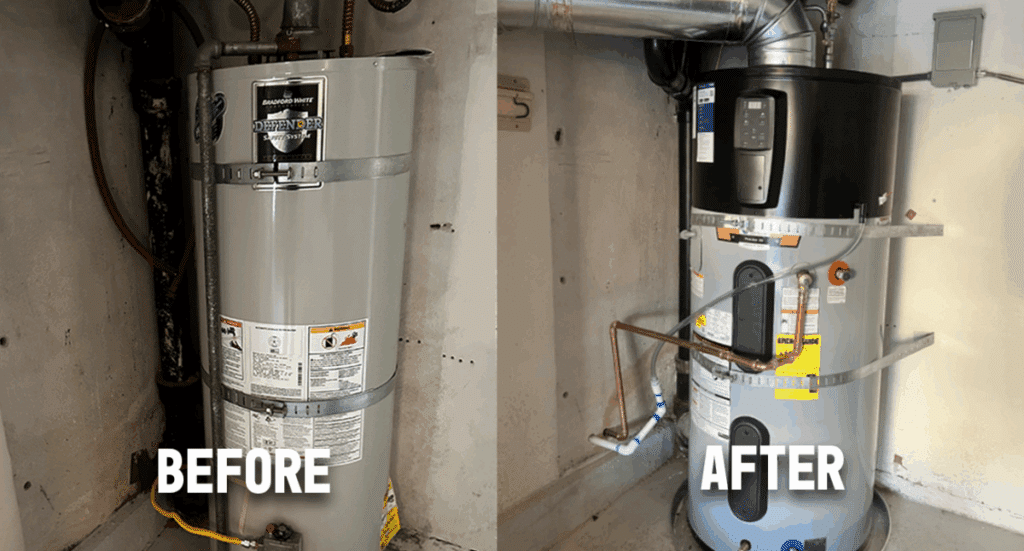
Gas water heater before, heat pump water heater after.
When I purchased my home, the old water heater worked, but wasn’t up to code because it was sitting on the ground in the garage. Rather than pay for the labor to move a 10 or 15 year old machine off the ground, we used rebates like those with TECH Clean CA and Golden State — which EMH managed for me — to upgrade to a heat pump water heater the year following the initial home purchase.
If you’re considering multiple major home electrification upgrades, here’s a pro tip for you that we learned during the process: you can only claim one federal tax credit ($2000) per year for either your HVAC or your water heater, so take your pick. (These expire in December 2025) Because we decided to upgrade the HVAC in 2023, we had to wait a few months for the new calendar year in 2024 to tackle the water heater.
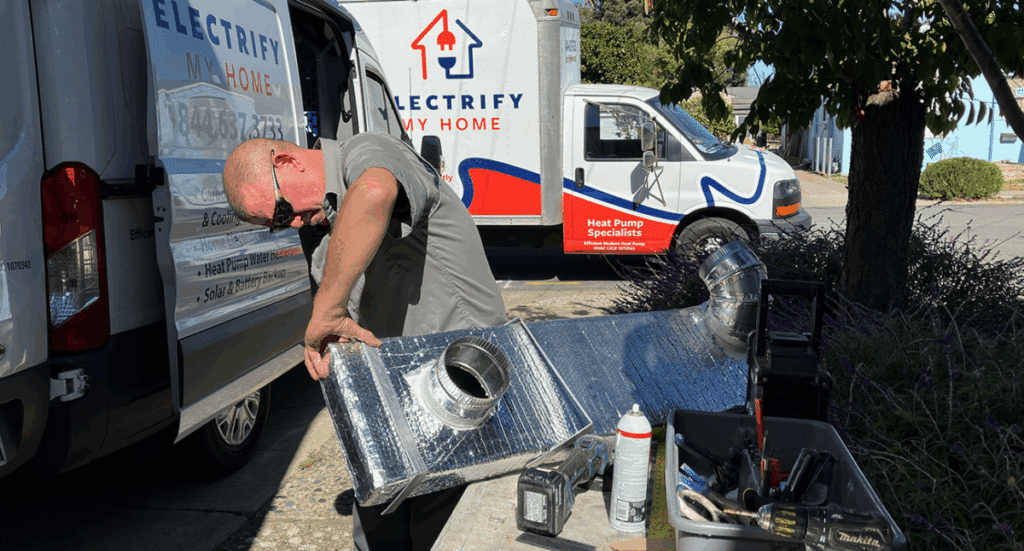
EMH technician preparing the sheet metal duct component for installation.
Plan Ahead for Electrical Upgrades
It probably isn’t surprising to hear that our new house needed some pretty extensive electrical and service upgrades to support the transition to a fully electrified home, and not all of those updates could be completed before we moved in.
As a result, there were some (relatively) minor inevitable headaches that we had to navigate. But we found creative ways to be able to use the Internet even with the power off to the house for electrical work — like bringing in a backup battery for the days we were without power.
If you find yourself in a similar situation living in your house while electrical upgrades are happening, there are new resources that can help you plan, provide alternate options to get you through the install, and minimize disruptions to your daily life. If you don’t have a friend who can loan you a giant battery, you can now rent one with this “Airbnb of batteries”!

Gas stove before removal. I got an induction cooktop because I already have an all-electric oven and didn’t need an induction range with an oven built-in, because I wanted to keep my cabinets.
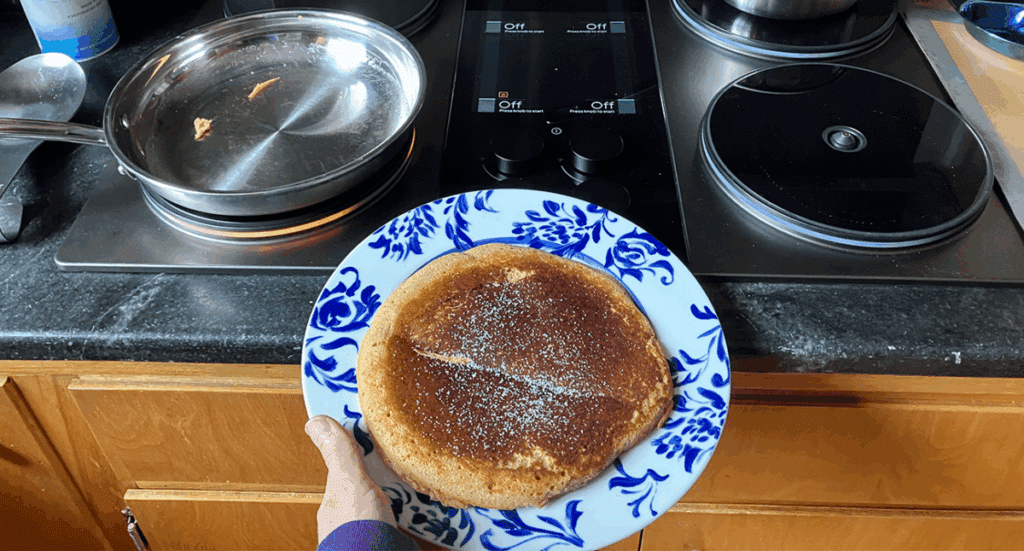
My first meal on my new induction cooktop: a pancake with protein powder.
An Induction Cooktop in the Heart of My Home
The kitchen is an emotional place for a lot of folks, where people share meals and memories. Like a lot of people, I grew up cooking on gas. I understand why many people are attached to cooking on an open flame. There was a moment where I was unsure about making the switch, worried that I’d lose something essential in the experience of cooking.
But once I experienced how much easier and better it was to cook with induction technology, even using a portable renter-friendly cooktop like this one, there was no going back.
Beyond the climate-centric reasons to make the switch, I’m convinced that it’s just simply a better way to cook. For starters, induction is more efficient, which means water boils in record time and weeknight meals come together faster. With gas, 40% of the energy goes to the food, with electric resistance it’s 70% and with induction it’s a whopping 90%. Faster weeknight meals are something everyone can appreciate, whether you’re a busy professional or a hangry teenager.
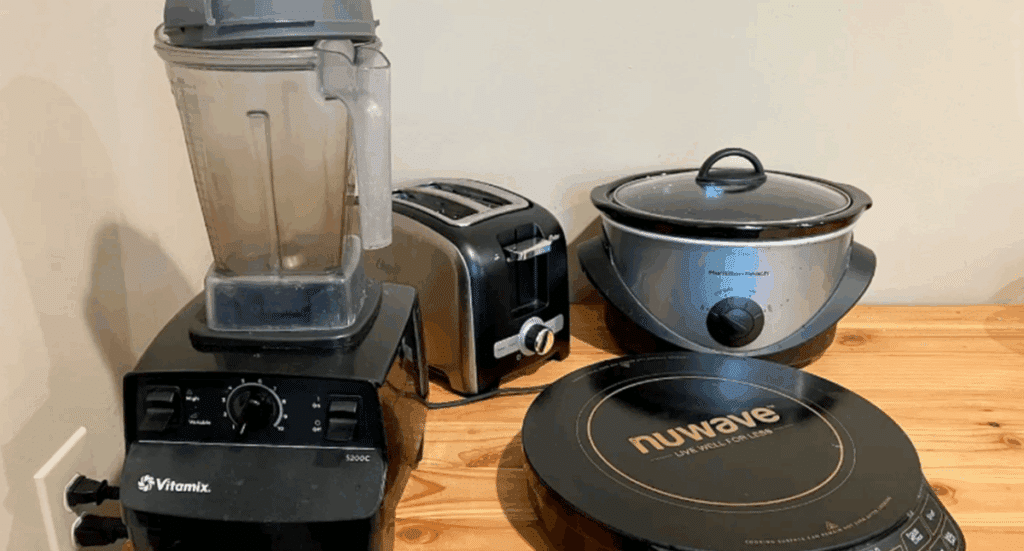
If you’re still a few years away from buying a house, you can get started with clean electric appliances with these portable ones for your kitchen.
The best part? The kitchen itself stays much cooler, which is a benefit I didn’t realize how much I’d really appreciate until we were cooking during the first summer in our home. The air in our kitchen (and throughout the rest of our home) doesn’t reek of fossil fuels. Without gas fumes, I don’t have to worry about what I’m breathing in while making dinner or what friends are exposed to when I host a dinner party. Side note: you can make hummus with all-electric appliances, even as a renter with a portable induction cooktop! Depending on what induction cooktop you want, you may need a 240v electric line for your kitchen, unless you get one of these three 120v induction stoves with batteries built in: Copper Home, Impulse Labs, or Electra.
Ultimately, it’s far more than just a small efficiency upgrade for me — it’s a healthier, more comfortable way to live. I’m also happy to contribute my part to pruning the gas system, because even if fossil gas stoves don’t use much gas, the thousands of miles of fossil fuel pipeline infrastructure they require are actually significant when it comes to climate change.
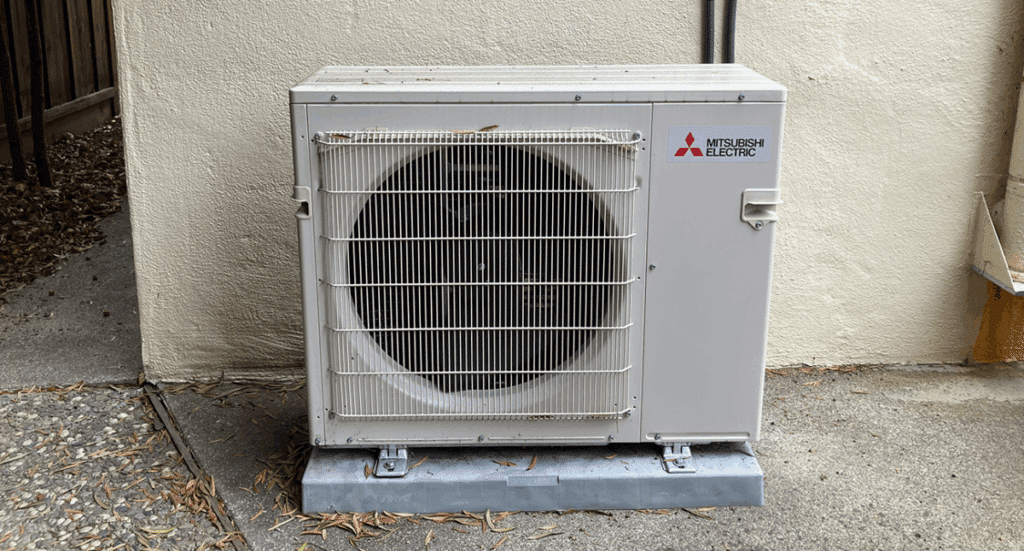
My expertly-installed Mitsubishi Electric HVAC Heat Pump System.
Things to Consider About Rebates
If you’ve been on the fence about electrifying your home and you’ve made it this far into reading about my experience, clearly you’re pretty invested in making it happen, which is awesome. With the end of the year rapidly approaching, now is a great time to look into what rebates and tax credits are available to you through the end of this year. There are some Biden-era incentives that will be ending when the calendar flips to 2026, so I recommend doing the research to see what options you can take advantage of now.
There are times of the year where rebates are better than others (like from TECH Clean CA, which has rebates that are “on again, off again”), so checking in on what rebates are available might be best as an ongoing to-do list item for the next few months. My advice: Know what projects are on your ‘must have’ and ‘nice to have’ lists, and then be ready to jump on an opportunity when a great incentive is available. There are resources available out there to assist you in your rebate research, including the Switch is On incentive directory (covering CA, WA, and Long Island, NY as of 2025) and home electrification experts like EMH.
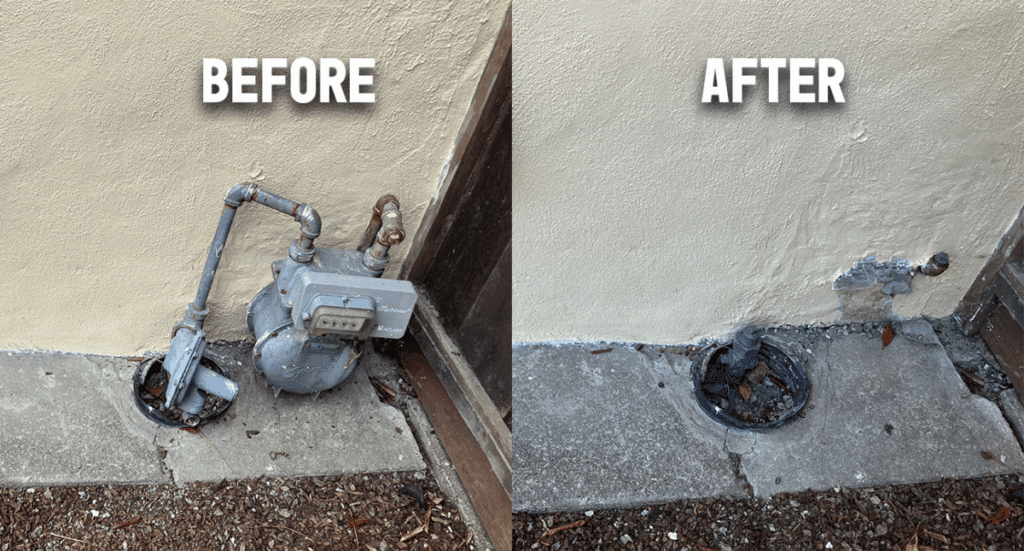
The gas meter is finally removed from my home!
What You Can Do
Now that I can proudly say that I’ve cut my gas line and am 100% on electric home appliances, I’m so happy with our decision to go with the Electrify My Home team. They really made the entire process — from initial virtual consultation call to the final install — as seamless and headache-free as possible. The fact that they train other contractors AND install heat pumps mattered to me as a sign of quality. They were also great at communicating throughout the process.
The EMH team’s specialized knowledge was also a game changer for us, as we were all on the same page from beginning to end. In the same way you wouldn’t take your Prius Prime or Chevy Volt to a gas mechanic, you shouldn’t trust new technology like heat pumps to a company that doesn’t have the expertise of a company like EMH.
Switching to efficient, clean, all-electric appliances has undoubtedly made my home healthier, and better at supporting California’s climate goals. On my to-do list: getting solar and battery storage and an EV in the next few years.
I can’t recommend the team at Electrify My Home enough. If you’ve been looking for a reason to learn more about what it would take to electrify your home as I’ve done to mine, now’s the time. Book a virtual assessment with Electrify My Home and get a custom plan for your house.
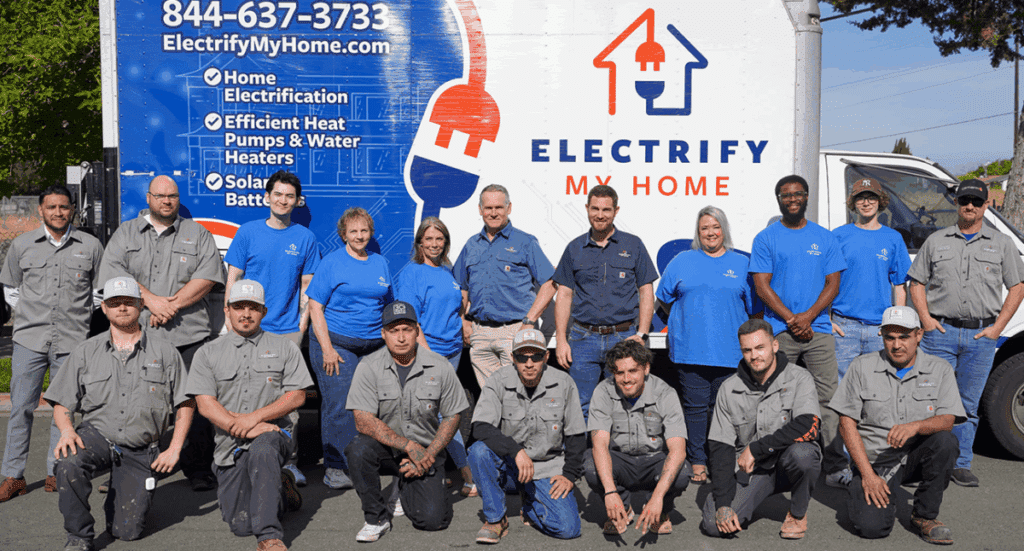
The Electrify My Home team.